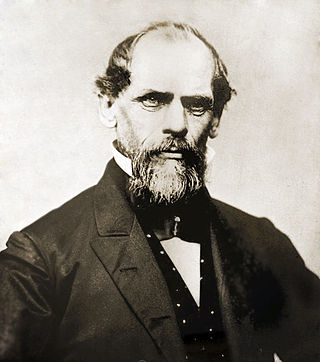
John Augustus Roebling was a German-born American civil engineer. He designed and built wire rope suspension bridges, in particular the Brooklyn Bridge, which has been designated as a National Historic Landmark and a National Historic Civil Engineering Landmark.
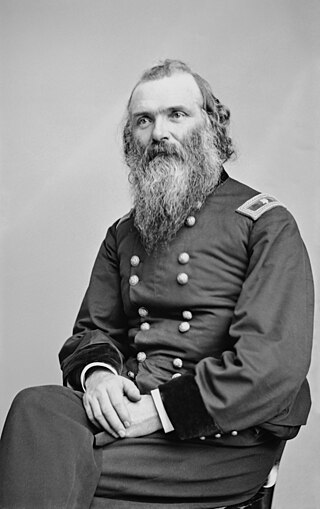
Daniel Craig McCallum was a Scottish-born American railroad engineer, general manager of the New York and Erie Railroad and Union Brevet Major General of the United States Military Railroads during the American Civil War, known as one of the early pioneers of management. He set down a group of general principles of management, and is credited for having developed the first modern organizational chart.

Charles Francis Adams Jr. was an American author, historian, and railroad and park commissioner who served as the president of the Union Pacific Railroad from 1884 to 1890. He served as a colonel in the Union Army during the American Civil War. After the war, he was a railroad regulator and executive, an author of historical works, and a member of the Massachusetts Park Commission.
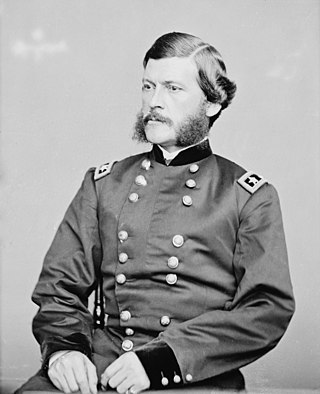
John Grubb Parke was a United States Army engineer and a Union general in the American Civil War. Parke's Civil War service was closely associated with Ambrose E. Burnside, often serving him as chief of staff in major engagements such as Antietam, Fredericksburg and the Overland Campaign. Parke also held significant field commands during Burnside's North Carolina Expedition, Vicksburg and the battle of Fort Stedman as well as brief stints in command of the Army of the Potomac. From 1887 to 1889, John G. Parke was the Superintendent of the United States Military Academy.
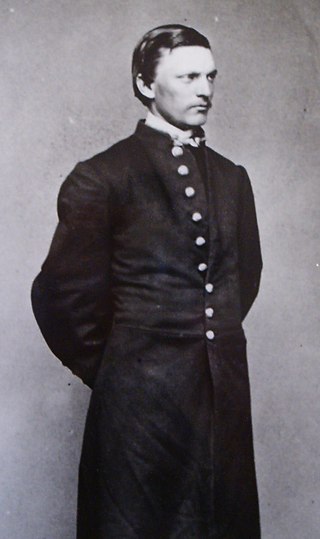
Washington Augustus Roebling was an American civil engineer who supervised the construction of the Brooklyn Bridge, designed by his father John A. Roebling. He served in the Union Army during the American Civil War as an officer at the Battle of Gettysburg.
Walter Gwynn was an American civil engineer and soldier who became a Virginia Provisional Army general and North Carolina militia brigadier general in the early days of the American Civil War in 1861 and subsequently a Confederate States Army colonel. He was a railroad engineer and railroad president before the Civil War, Florida Comptroller in 1863 and a civil engineer after the Civil War.

John Aaron Rawlins was a general officer in the Union Army during the American Civil War and a cabinet officer in the Grant administration. A longtime confidant of Ulysses S. Grant, Rawlins served on Grant's staff throughout the war, rising to the rank of brevet major general, and was Grant's chief defender against allegations of insobriety. He was appointed Secretary of War when Grant was elected President of the United States.

Joseph Cowles Mehaffey was a major general in the United States Army. As a member of the Army Corps of Engineers, he was the consulting engineer on the Arlington Memorial Bridge in Washington, D.C.; helped renovate the White House; and served as a supervising engineer for the Works Progress Administration during the Great Depression. He was assigned in 1941 as maintenance engineer of the Panama Canal, and was governor of the Panama Canal Zone from 1944 to 1948.

Warner Miller was an American businessman and politician from Herkimer, New York. A Republican, he was most notable for his service as a U.S. Representative (1879-1881) and United States Senator (1881-1887).

Henry Larcom Abbot was a military engineer and career officer in the United States Army. He served in the Union Army during the American Civil War and was appointed brevet brigadier general of volunteers for his contributions in engineering and artillery. In 1866 he received additional brevet appointments as major general of volunteers and brigadier general in the Regular Army. He conducted several scientific studies of the Mississippi River with captain, later Major General Andrew A. Humphreys. After his retirement, Abbot served as a consultant for the locks on the Panama Canal. He was elected a Fellow of the American Academy of Arts and Sciences in 1863.

René Edward De Russy was an engineer, military educator, and career United States Army officer who was responsible for constructing many Eastern United States coastal fortifications, as well as some forts on the West Coast. He also served as superintendent of the United States Military Academy. He was promoted to brigadier general during the American Civil War.

Charles Beebe Stuart was an American engineer, United States Navy and Union Army officer and politician.
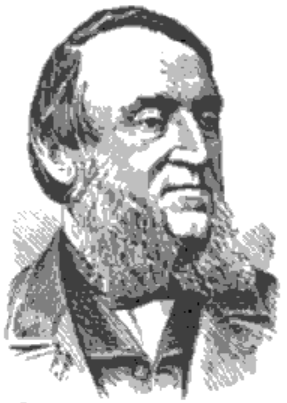
William Jarvis McAlpine was an American civil engineer and politician from New York. He was New York State Engineer and Surveyor from 1852 to 1853.
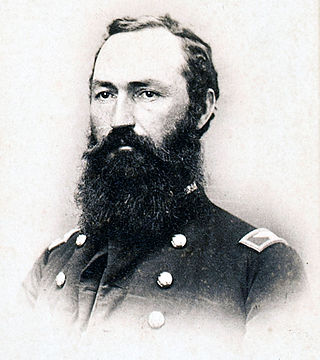
Hiram Scofield was a lawyer and Union Army officer during the American Civil War. He entered the Army as a private in 1861 and was discharged as a colonel on January 5, 1866. In February 1866 he was nominated by President Andrew Johnson for appointment to the rank of brevet brigadier general of volunteers and the United States Senate confirmed the appointment in April 1866.

John Anderson Bensel was an American civil engineer and politician from New York. He was President of the American Society of Civil Engineers in 1910. He was New York State Engineer and Surveyor from 1911 to 1914.

The 1st New York Engineer Regiment was an engineer regiment that served in the Union Army during the American Civil War. It was also known as Serrell's Engineers, New York Volunteer Corps of Engineers, or Engineer's and Artizans. The regiment served initially in the Lower Seaboard Theater, and later in the Richmond–Petersburg Campaign.

The Rapallo Viaduct is a buried railroad trestle in East Hampton, Connecticut which carries the Air Line Trail across Flat Brook.
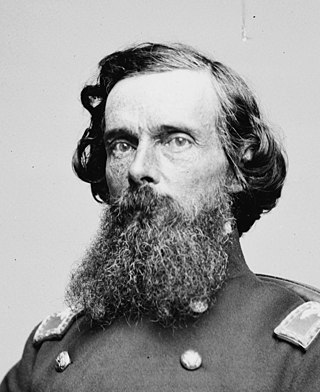
Julius Walker Adams was an American civil engineer and railroad engineer, who designed the Starrucca Viaduct. He co-founded the American Society of Civil Engineers in 1852 and served as its president from 1874 to 1875.

Colonel Frederick Mears was an American military officer in the US Army and railroad engineer and executive. He was the son of a career army officer and his brother Major Edward C. Mears was also in the US army. Mears was principal engineer of the Alaska Railroad. Mears took advanced engineering courses at the Infantry and Cavalry School, located at Fort Leavenworth, Kansas and became a cavalry officer in the US Army.

Daniel Tompkins Van Buren was an American military officer and engineer. He attained the rank of brigadier general by brevet as a member of the Union Army during the American Civil War.




















